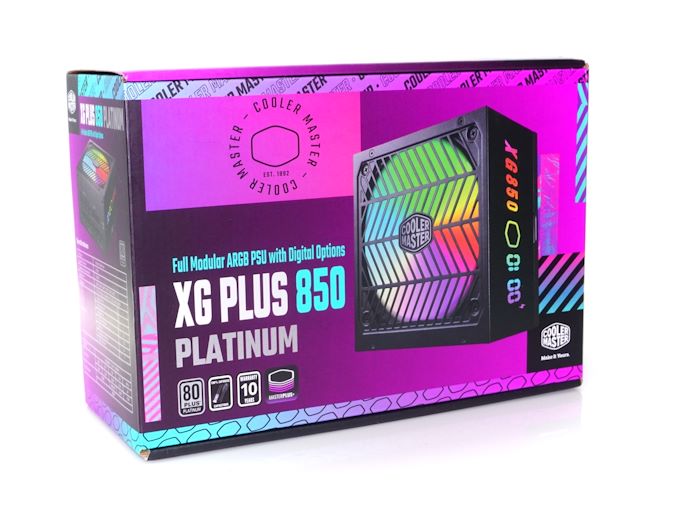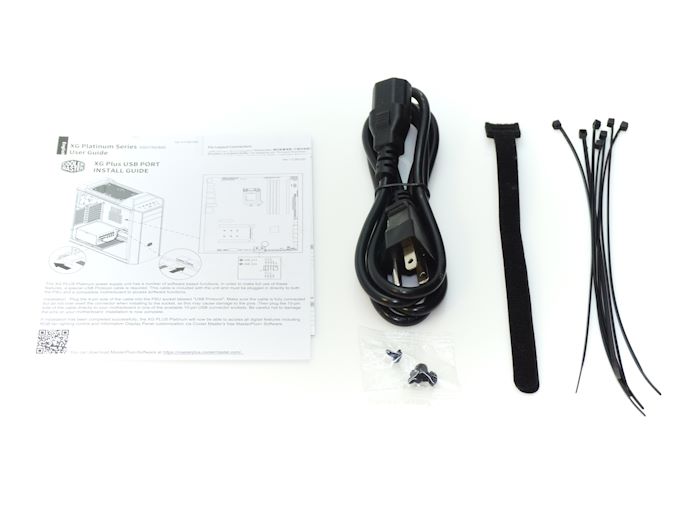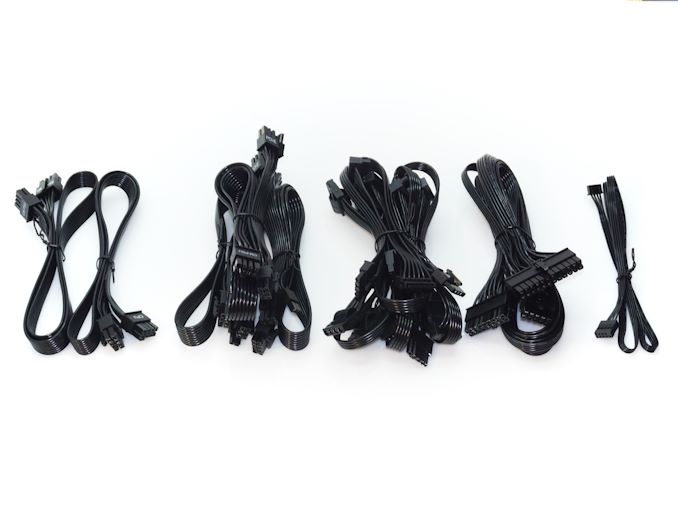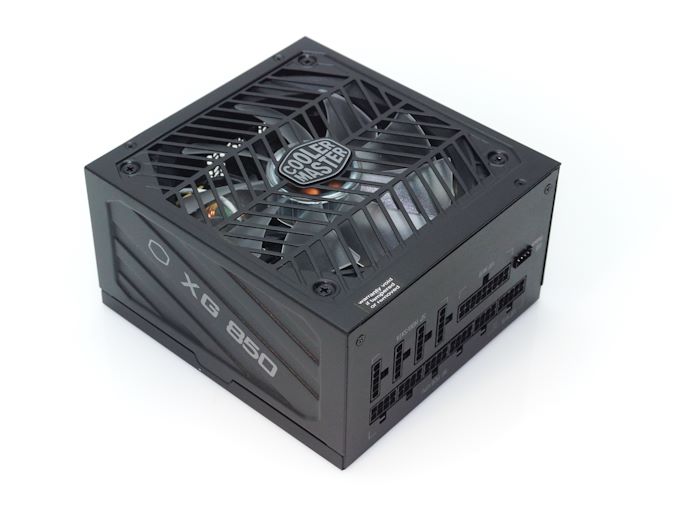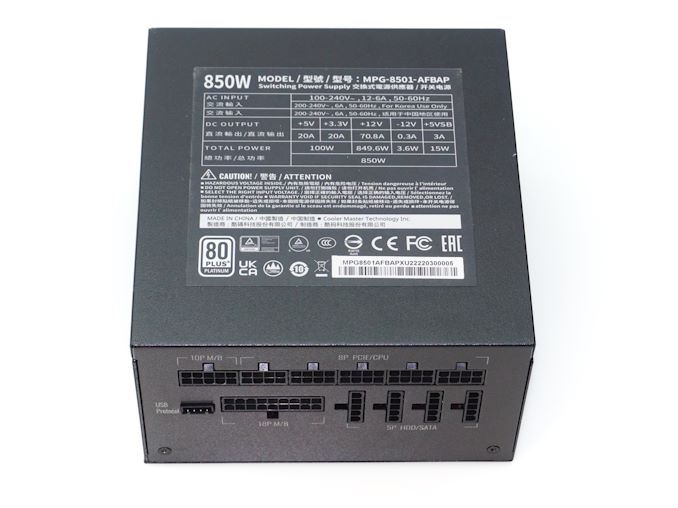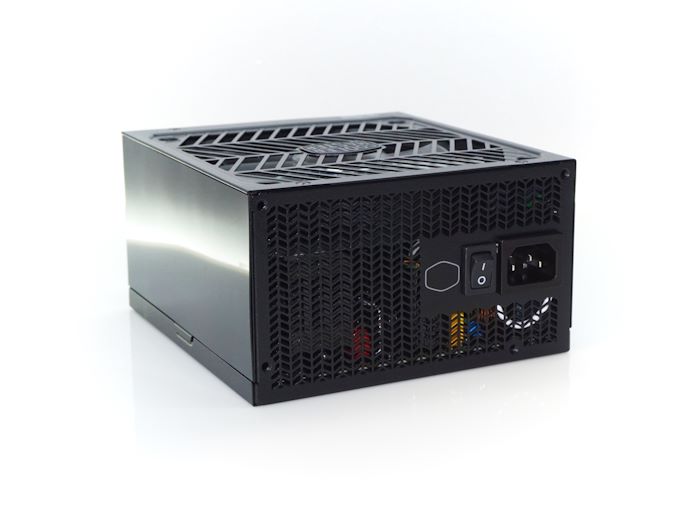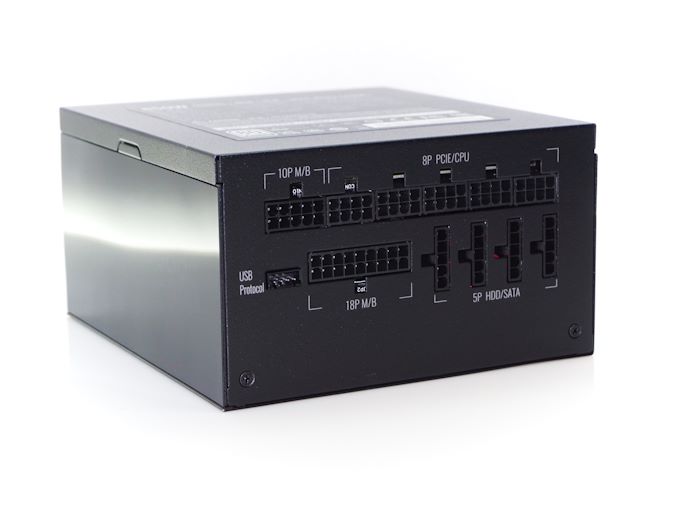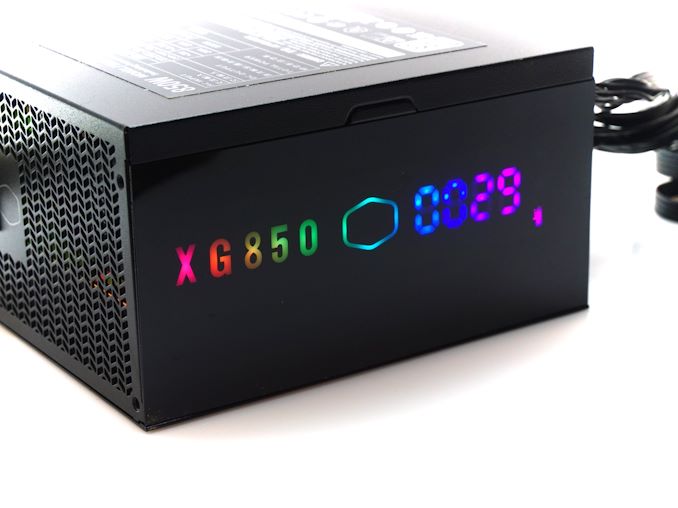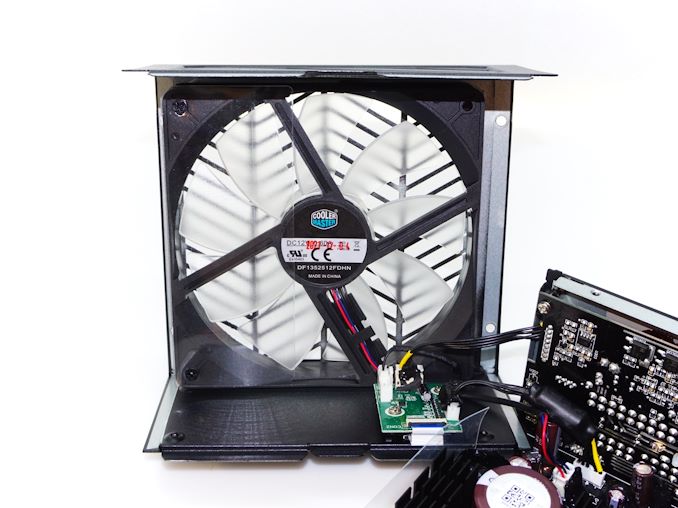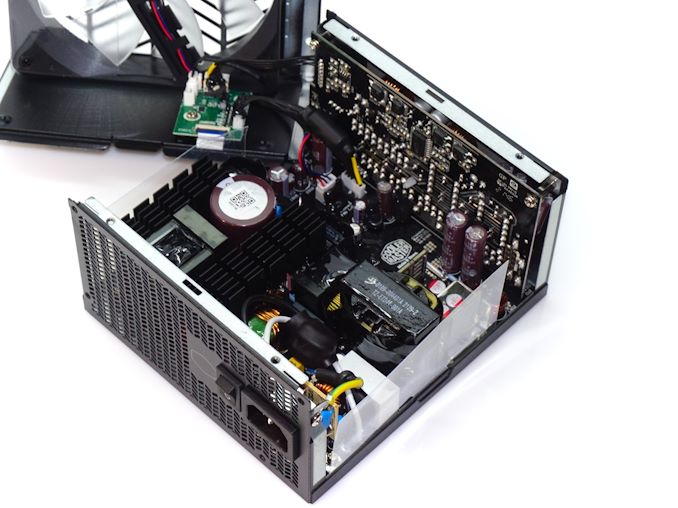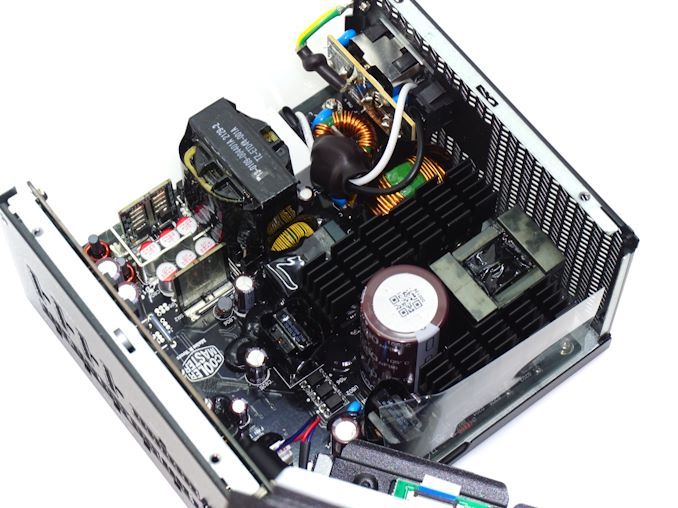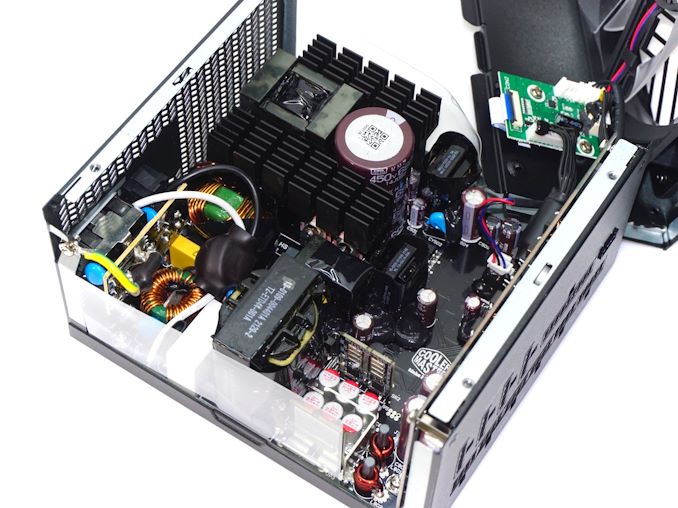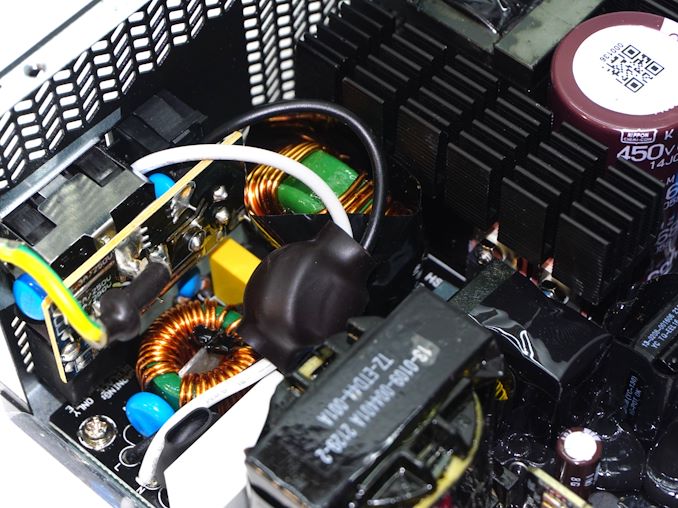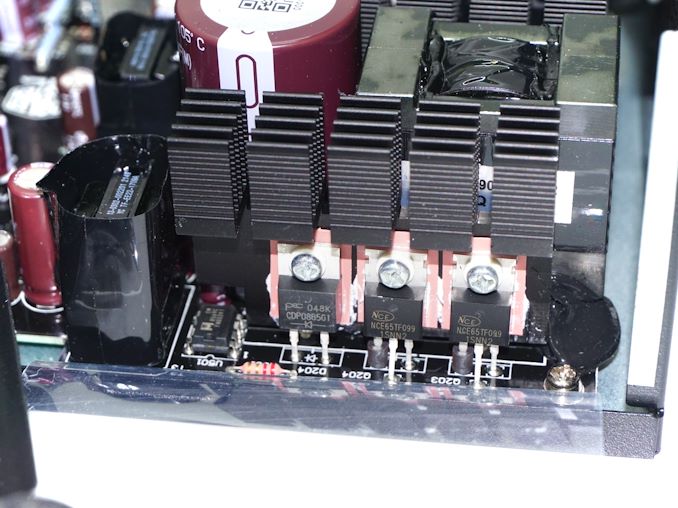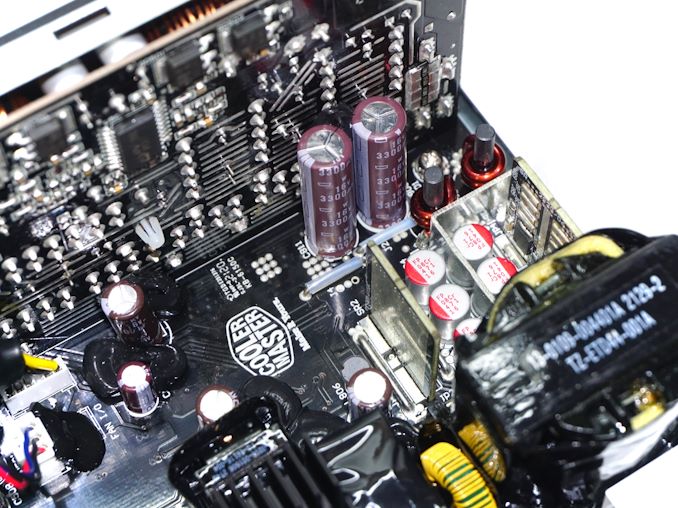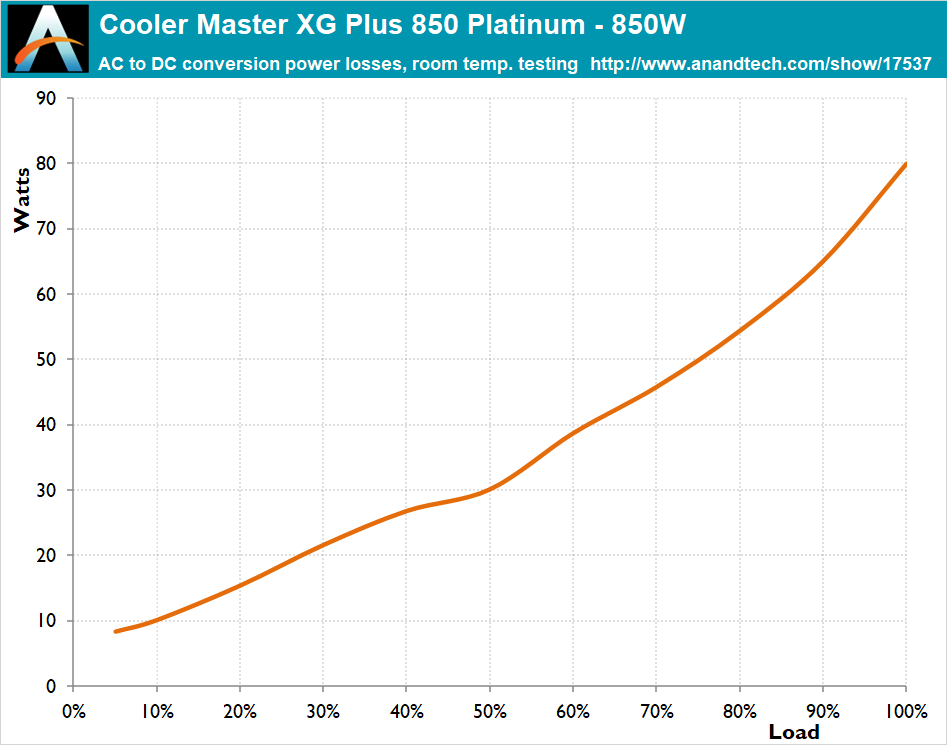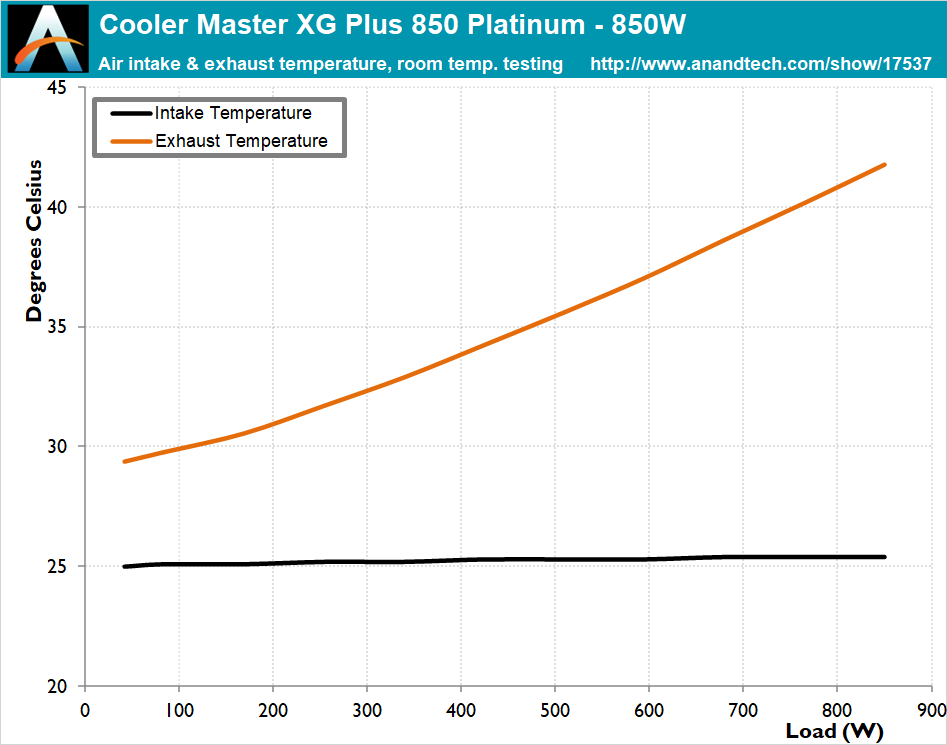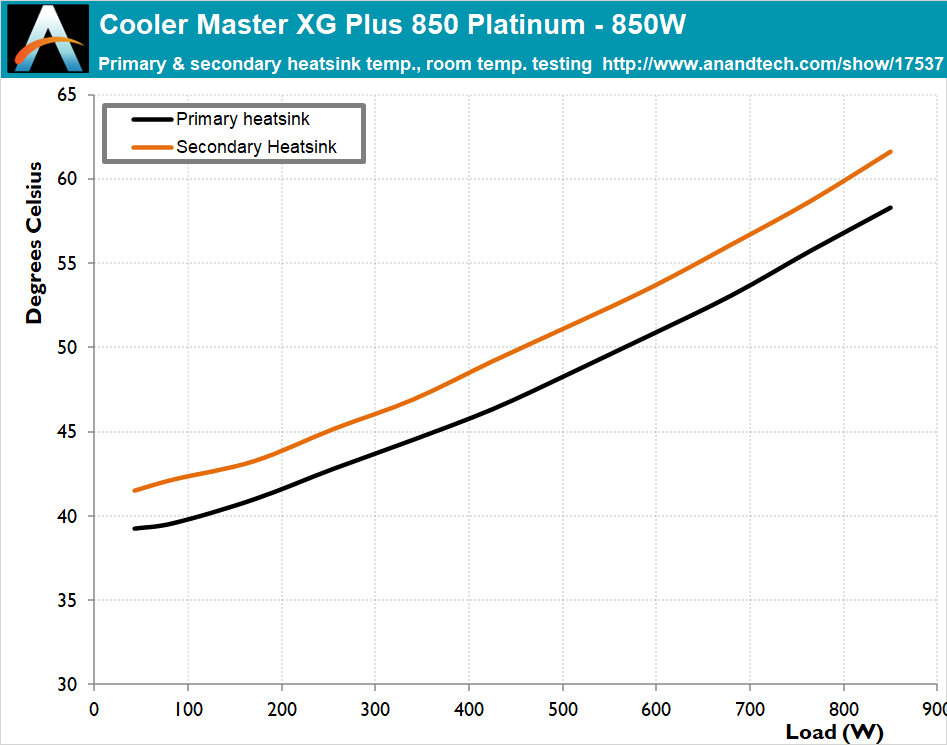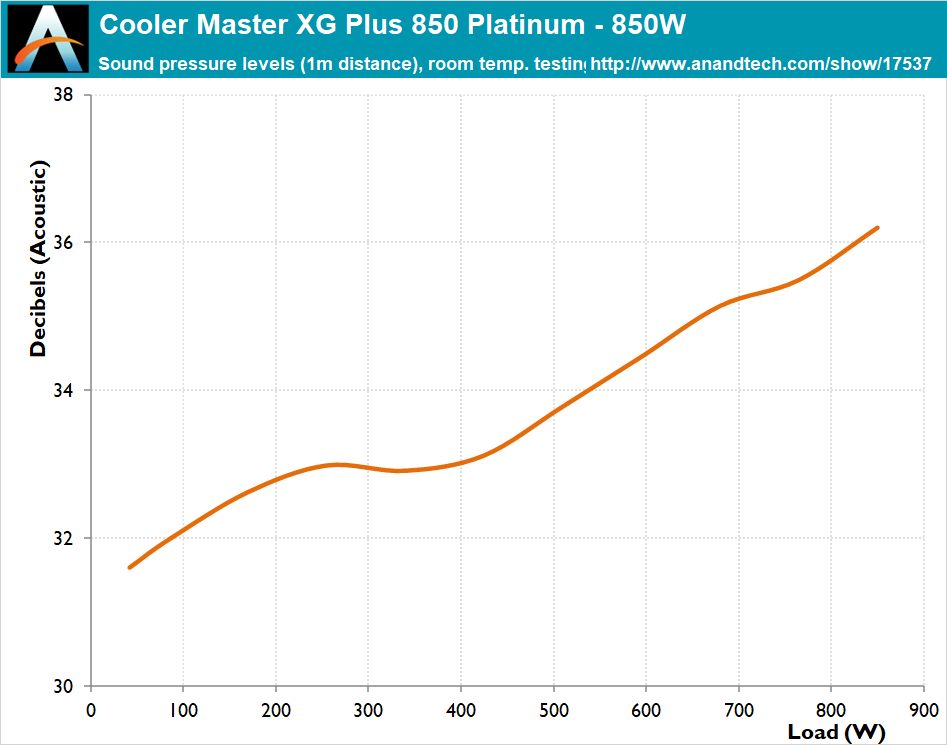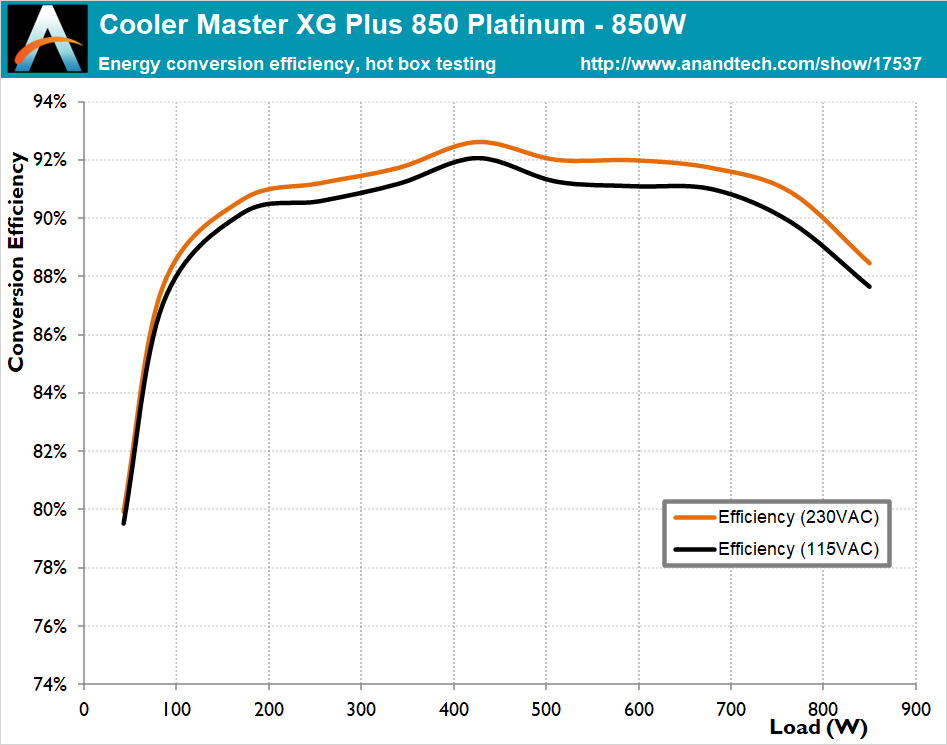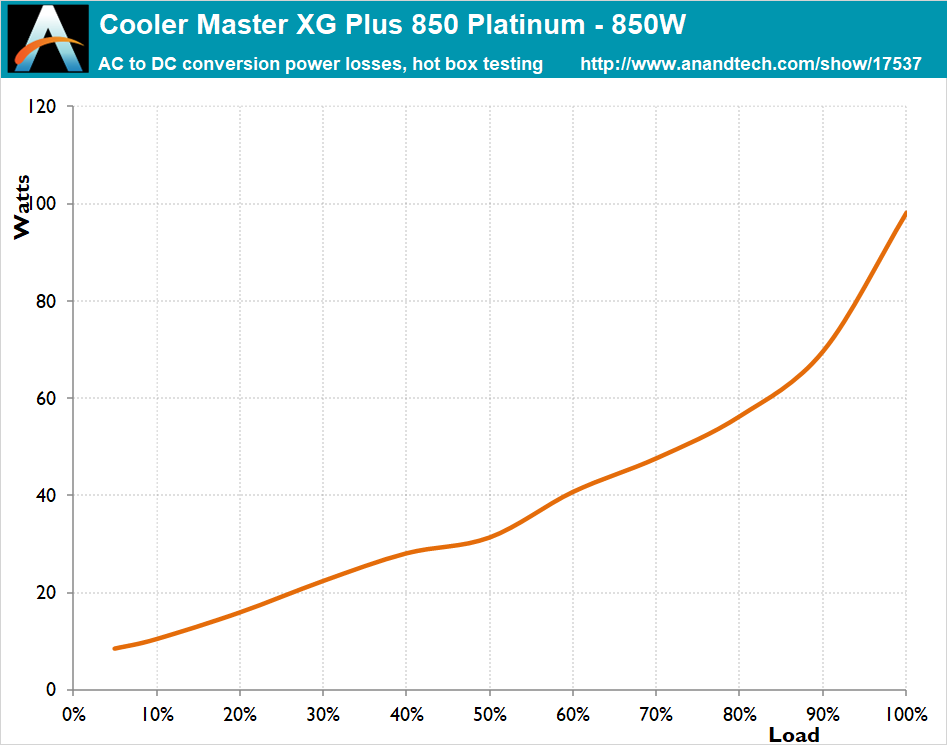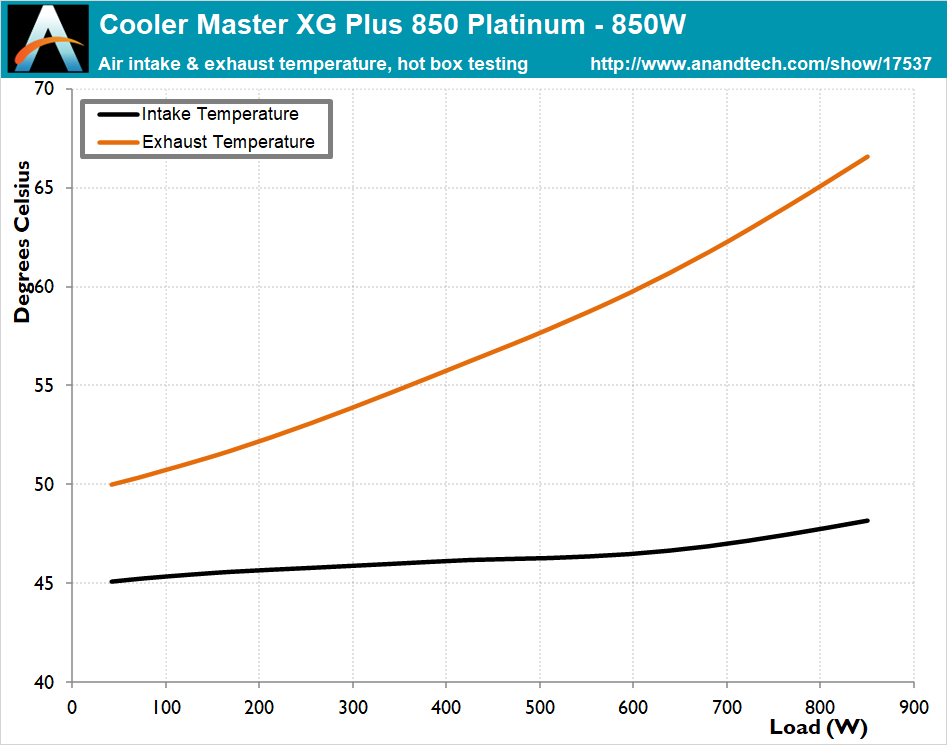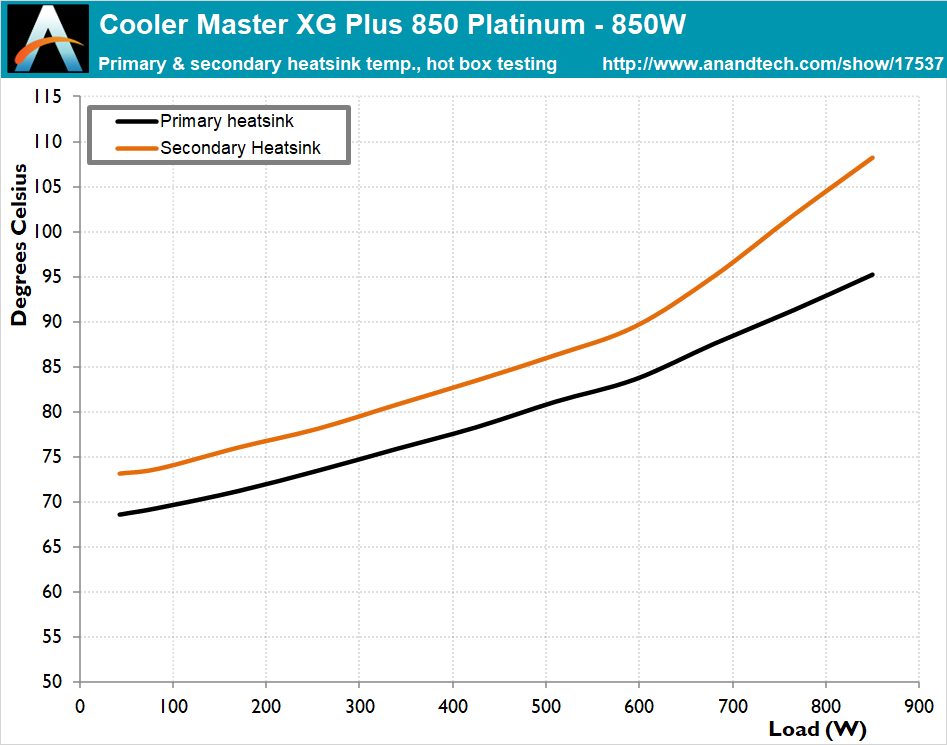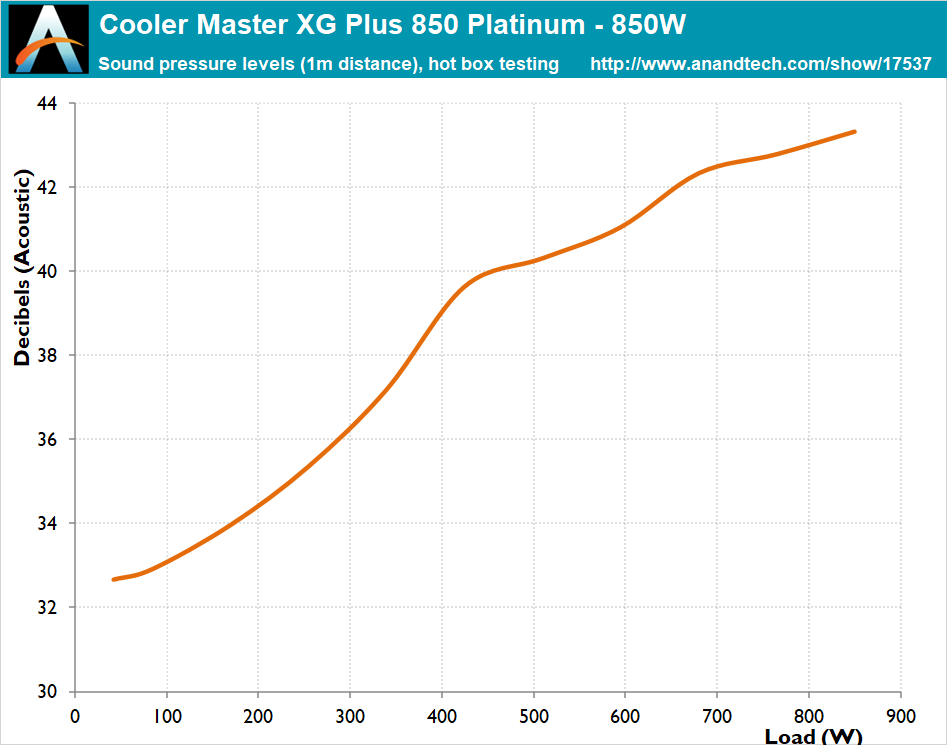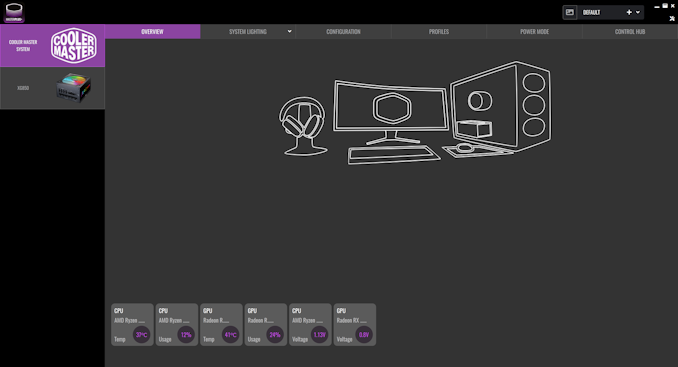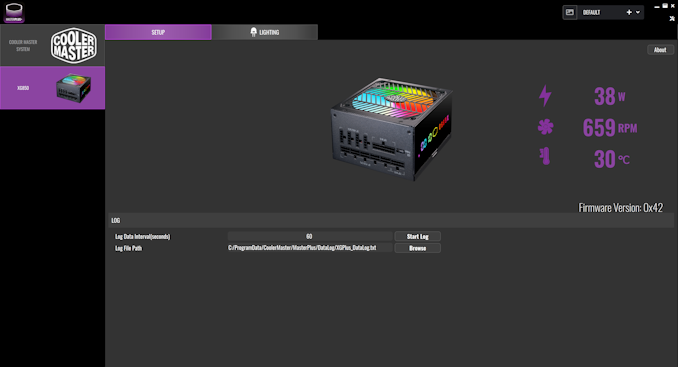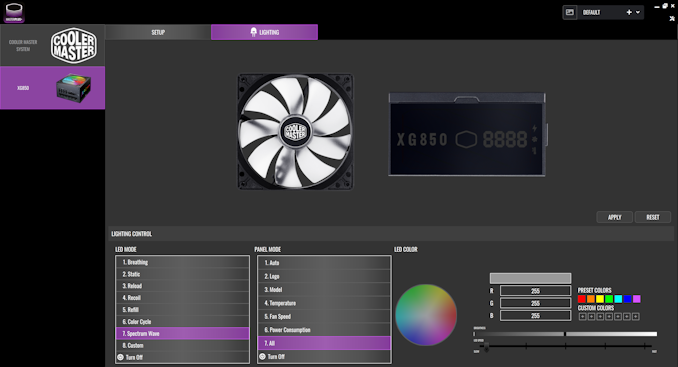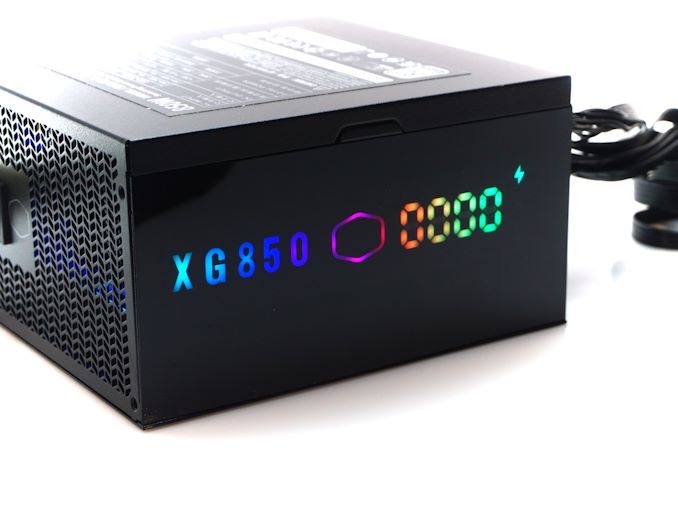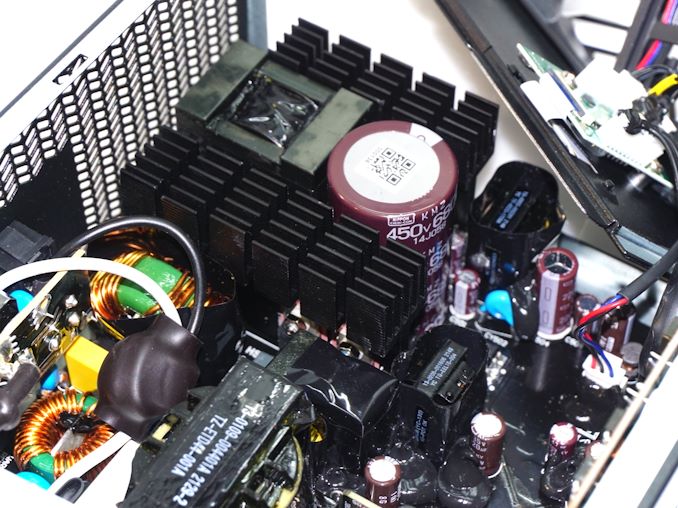
Original Link: https://www.anandtech.com/show/17537/the-cooler-master-xg850-plus-platinum-psu-review
The Cooler Master XG850 Plus Platinum PSU Review: Quality Plus RGB
by E. Fylladitakis on August 25, 2022 9:30 AM EST- Posted in
- PSUs
- Cases/Cooling/PSUs
- Cooler Master
- 80Plus Platinum
- ARGB
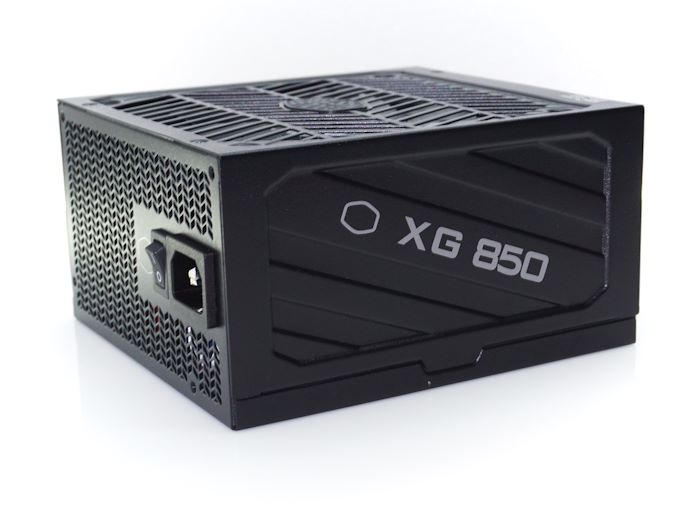
Cooler Master is a well-known brand among enthusiasts. The firm began as a maker of PC cooling systems and rapidly moved into cases and power supplies, which are responsible for most of its present renown. Today, the firm enjoys global recognition and manufactures hundreds of products, but they never stop updating and upgrading their catalogs.
Although Cooler Master did diversify towards gaming PC peripherals and even relevant furniture, the company remains strongly focused on PC Cases, Coolers, and PSUs, offering a vast selection of products in all of these three categories. At the time of this review, Cooler Master is offering an outworldish assortment of over 75 PC cases, 90 coolers, and 120 PSUs.
Today we are having a look at the new XG Plus Platinum series, the latest power supply family from prolific PC peripherals producer Cooler Master. Designed to offer a quality PSU with an extra dash of flair, the RGB fan (and RGB display) equipped XG Plus Platinum is a PSU that's not quite like anything else on the market. The XG family ranges from 650 to 850 Watts, and today we're evaluating the most powerful unit in the series, the 850W XG850 Plus Platinum.
| Cooler Master XG850 Plus Platinum Power specifications ( Rated @ 50 °C ) |
|||||
| RAIL | +3.3V | +5V | +12V | +5Vsb | -12V |
| MAX OUTPUT | 20A | 20A | 70.8A | 3A | 0.3A |
| 100W | 849.6W | 15W | 3.6W | ||
| TOTAL | 850W | ||||
| AC INPUT | 100 - 240 VAC, 50 - 60 Hz | ||||
Packaging and Bundle
Compared to most of the PC industry these days, Cooler Master is anything but subtle with the design of their packaging. The artwork is colorful and extravagant, mixing geometrical patterns with pictures and striking colors. Ultimately, what matters is that the unit is shipped in a very sturdy cardboard box and protected by ample layers of packaging foam.
Besides the typical AC power cable, mounting screws, and a basic instructions leaflet, Cooler Master also bundles a number of cable ties and a few cables straps alongside with XG Plus Platinum.
The XG Plus Platinum is an all-modular design, allowing for the removal of every DC power cable, including the 24-pin ATX connector. All of the cables are bare, ribbon-like, with black wires and black connectors. There is no floppy connector or adapter.
| Cooler Master XG850 Plus Platinum | ||
| Connector type | Hardwired | Modular |
| ATX 24 Pin | - | 1 |
| EPS 4+4 Pin | - | 1 |
| EPS 8 Pin | - | 1 |
| PCI-E 5.0 | - | - |
| PCI-E 8 Pin | - | 6 |
| SATA | - | 12 |
| Molex | - | 4 |
| Floppy | - | - |
The Cooler Master XG850 Plus Platinum PSU
External Appearance
The chassis of the Cooler Master XG850 Plus Platinum PSU measures 86 mm × 150 mm × 160 mm (H × W × D), which is 20 mm deeper than a fully ATX compliant PSU. The vast majority of modern PC cases account for the length of such high-performance PSU but the slightly extended length can still be a compatibility problem with certain small footprint designs.
Cooler Master really does want their latest PSU to stand out from the crowd, thus they went with a custom chassis with an embossed left side and an integrated fan finger guard. The embossed left side will be visible if the unit is placed upside-down at the bottom of a typical ATX case. The sticker with the unit’s certifications and specifications covers most of the unit’s top side.
A typical on/off switch can be seen at the rear side of the unit, right next to the standard AC power receptacle. The perimeter of Cooler Master’s logo is printed next to the switch. About half of the front side of the unit is covered by the connectors for the modular cables, with a basic legend printed above each connector. Here we can also see a small connector for an internal USB cable that connects the PSU to the motherboard.
While the PSU is turned off, the right side of the unit is entirely plain and, unlike the metallic matte body of the unit, it is a glossy acrylic. There is an RGB display hidden behind the acrylic, displaying the unit’s model and three practical figures – power output, temperature, and fan RPM. The PSU needs to be installed with care because the acrylic can be very easily scratched.
However, the real problem here is the orientation of the PSU itself – if users select a case that has the PSU compartment located at its bottom, they will have to make a choice between showcasing the RGB fan or the side panel display. It is also likely that the side panel display will not be visible even if the PSU is located at the top of the case, as many products are designed so as to hide the PSU from direct eye contact.
Internal Design
Cooler Master has rebranded the 135 mm RGB fan that is inside the XG Plus Platinum unit. The fan has a hydro-dynamic sleeve bearing, which is both quiet and reliable. It has a maximum speed of 1800 RPM, which is a lot for a fan of that size but, according to the graphs that are printed on the box, the fan should not even reach 1000 RPM under normal ambient conditions.
The inside of the XG Plus Platinum is unlike any platform that we have encountered before, with Cooler Master insisting that this PSU is entirely of their own design. Huizhou Xinhuiyuan Technology might kind of disagree with that claim though. Nonetheless, we have no details regarding the platform or how much Cooler Master’s engineers were involved on its design.
The filtering stage of the Cooler Master XG Plus Platinum PSU is textbook, with a total of four Y capacitors, two X capacitors, and two filtering inductors. There also is a relay to bypass the NTC for increased efficiency. The rectifying bridges are placed on the main heatsink of the primary side’s inverting components. The active APFC components are attached to a separate heatsink across the side of the unit. Nippon Chemi-Con supplies the large 450V/680μF APFC capacitor, which is placed right next to a sizable filtering coil.
On the primary side of the main transformer, four transistors form a full-bridge inversion topology, while four MOSFETs generate the 12V line at the secondary side of the transformer. It is noteworthy that these four MOSFETs are the JMSL040SAG by JieJie Microelectronics, a company whose products we've never encountered before. For the record, the MOSFETs on the primary side (NCE65TF130) are provided by NCE Power.
The 3.3V and 5V lines are being generated via the DC-to-DC conversion circuits. This would have been a typical configuration for any unit with a high efficiency certification, with the unique characteristic here being that the conversion circuitry is placed directly onto the board with the cable connectors instead of stand-alone PCBs. All of the secondary capacitors, electrolytic and polymer alike, are provided by Nippon Chemi-Con and Nichicon, both of which are highly reputable Japanese manufacturers.
Cold Test Results (~25°C Ambient)
For the testing of PSUs, we are using high precision electronic loads with a maximum power draw of 2700 Watts, a Rigol DS5042M 40 MHz oscilloscope, an Extech 380803 power analyzer, two high precision UNI-T UT-325 digital thermometers, an Extech HD600 SPL meter, a self-designed hotbox and various other bits and parts. For a thorough explanation of our testing methodology and more details on our equipment, please refer to our How We Test PSUs - 2014 Pipeline post.
The Cooler Master XG Plus 850 Platinum PSU does meet the 80Plus Platinum certification requirements when powered from a 115 VAC source. The certification’s requirements are stricter when the input voltage is 230 VAC and this PSU fails to meet them, as it would have to surpass 94% efficiency at half load. The average nominal load range (20% to 100% of the unit's capacity) efficiency of the Cooler Master XG Plus 850 Platinum is 91.8% when powered from a 230 VAC source, or 91.1% when powered from a 115 VAC source.
This PSU does not feature a “hybrid” fan mode - quite possibly because of the RGB lighting that requires a moving fan to be visually appealing – so the fan immediately starts when the unit is powered on. The speed of the fan is maintained very low across the entire load range while the unit operates in room temperature, resulting to a very quiet-running unit that is barely audible even while heavily loaded. Despite the slow fan, the temperatures are not too high.
Hot Test Results (~45°C Ambient)
For the most part, the Cooler Master XG Plus 850 Platinum is resilient to high environmental temperatures, with the electrical performance of the unit largely unaffected while it was operating inside our hot box. The average efficiency drop across the entire load range is 0.6%, which is substantial, yet the drop up to an output of 700 Watts is less than 0.35%. While the PSU is heavily loaded, the degradation is severe, which usually suggests excessive thermal stress on the switching components.
The thermal control circuitry of the Cooler Master XG Plus Platinum is clearly designed so as to favor acoustics over anything else. As a result, the internal temperatures of the unit are a little higher than expected across most of the load range. It is when the load exceeds 700 Watts that our readings turn troubling, as the active components are clearly getting overstressed, resulting to an efficiency drop and a significant temperature rise.
Unlike with the PSU operating in room temperature, the thermal control circuitry does force the 135 mm fan to spin faster now that the ambient temperature is very high. However, the fan still fails to reach anywhere near its maximum speed, even while the active components of the unit reach unnervingly high temperatures. This is a very daring design approach for a unit with such a long warranty.
Power Supply Quality
| Main Output | ||||||||
| Load (Watts) | 171.77 W | 428.28 W | 639.84 W | 852.08 W | ||||
| Load (Percent) | 20.21% | 50.39% | 75.28% | 100.25% | ||||
| Amperes | Volts | Amperes | Volts | Amperes | Volts | Amperes | Volts | |
| 3.3 V | 1.82 | 3.38 | 4.56 | 3.38 | 6.84 | 3.35 | 9.11 | 3.34 |
| 5 V | 1.82 | 5.1 | 4.56 | 5.08 | 6.84 | 5.07 | 9.11 | 5.05 |
| 12 V | 12.91 | 12.11 | 32.26 | 12.08 | 48.4 | 12.03 | 64.53 | 12.02 |
| Line | Regulation (20% to 100% load) |
Voltage Ripple (mV) | |||||
| 20% Load | 50% Load | 75% Load | 100% Load | CL1 12V |
CL2 3.3V + 5V |
||
| 3.3V | 1% | 8 | 8 | 10 | 10 | 8 | 10 |
| 5V | 1% | 8 | 8 | 10 | 12 | 8 | 10 |
| 12V | 0.8% | 12 | 22 | 34 | 46 | 36 | 24 |
The electrical performance of the Cooler Master XG850 Plus Platinum PSU is good for a unit of this price range and class, but is not in any way special. The voltage regulation on all voltage lines is slightly under 1% across the nominal load range, which is fairly impressive considering most manufacturers neglect the secondary 3.3 V and 5 V lines. The power quality of all three voltage lines is very good, with a maximum ripple of 46 mV, 12 mV, and 10 mV on the 12 V, 5 V, and 3.3 V lines respectively.
As part of our standard testing, we test the primary protections of all PSUs we review (Over Current, Over Voltage, Over Power, and Short Circuit). The Cooler Master XG850 Plus Platinum successfully passed all of the tests, generally reacting timely when needed and shutting down to protect itself and the components it is powering. The only worrying part is the OPP protection, which allows the unit to temporarily reach up to nearly 1.000 Watts before shutting it down, a very high figure considering the high heavy load temperatures that the PSU can reach.
The Master Plus+ Software
The Cooler Master Master Plus+ software is a unified solution that accommodates all of the recently released Cooler Master products, allowing the monitoring and configuration of all compatible devices from a single interface. It also takes readings of all available device sensors, such as motherboard and graphics cards power and temperature readings. The XG Plus Platinum PSU is compatible with this software and it will be recognized by the system if the USB cable is connected to the motherboard.
The communication of the Cooler Master XG Plus Platinum PSU with the system virtually is one-way. With the exception of its RGB lighting, nothing else can be configured in any way. Once the PSU has been selected, the primary screen is just displaying the same three readings that can be seen on the PSU itself. There is an option to start a log of these three values to a file, with adjustable logging intervals.
The second screen allows for lighting control, allowing the user to individually adjust the side screen and the fan lighting. There are not too many options here but these are plenty for a PSU. If more compatible Cooler Master devices are present, users can synchronize RGB lighting between all of them.
Conclusion
The Cooler Master XG Plus Platinum has been developed, according to the firm, entirely in-house, essentially marking a new era for the revered PC power & cooling company. Very few companies can boast having power platforms that only they produce – even when counting those who form exclusivity contracts with OEMs. Although no company can stray too far away from the recommended design guide when it comes to PC PSUs, Cooler Master has made some interesting design choices.
Although this is a brand-new platform, the core design of the Cooler Master XG850 Plus Platinum 850W PSU is based on topologies that have been around for decades. It is obvious that the engineers who designed this unit did not want to try and reinvent the wheel, and instead leaned towards a safe, reliable solution. After all, the combination of a proven design with high quality parts frequently is the recipe for success. Most of the parts that Cooler Master used are of exceptional quality, with our only concern being the secondary side MOSFETs, which seem to be getting stressed if the internal temperature of the PSU goes too high.
The overall performance of the XG850 Plus Platinum is respectable. Our measurements showed that the power quality of the unit is by all means excellent. It also does meet the 80Plus Platinum efficiency certification requirements, but only if the input voltage is 115 VAC. On the thermals front, this might very well be the quietest 850 Watt PSU that we have ever tested, with the fan refusing to even speed up while the ambient temperature is low. The lax cooling however has a severe effect on the unit’s thermal performance, which reaches dangerously high temperatures if it has to operate heavily loaded inside a hot ambient environment, a scenario that also degrades the conversion efficiency.
Much of the marketing effort about the XG Plus Platinum is based on its aesthetic uniqueness – namely, the side panel display and the RGB fan. It is true that the RGB lighting is exceptionally well applied on the fan, with the LEDs producing crisp, bright colors and no blank spots in sight. The side panel display is an interesting feature. Although the displayed information may not be crucial for an end user, it is appealing and does provide information that could potentially be useful, even if a little bit.
The Cooler Master XG850 Plus Platinum marks a bold marketing attempt, as the firm is trying to entire almost every part of the PC gaming/enthusiast community. It offers good electrical performance, runs very quiet, and it is visually unique. Trying to put too many eggs into one basket though can backfire, as the fancy RGB lighting simply is not for everyone and can actually reduce sales instead of increasing them. Yes, it can be turned off, but the PSU's high $260 retail price means that buyers had best be using the feature in order to justify the premium price. Otherwise, there are less expensive products that would be a more reasonable choice.

